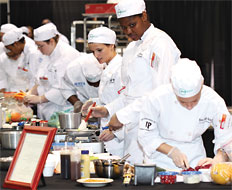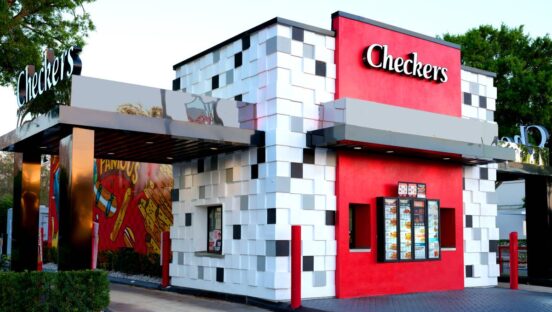Pop culture has not been kind to the quick-service industry.
From the lovable-but-dumb employees in Good Burger to the drug-addled protagonists of Harold and Kumar Go to White Castle, the industry is seen as a haven for dimwits, losers, and the vaguely criminal. Thousands of high school teachers threaten low-performing students by asking them, “Do you want to flip burgers for the rest of your life?”
Even the Merriam-Webster Dictionary gets in on the quick-serve bashing. Over the loud objections of McDonald’s, it added the word McJob to its dictionary in 2003. The definition? “A low-paying job that requires little skill and provides little opportunity for advancement.” But Merriam-Webster didn’t come up with the word, which first appeared in print back in 1986. They were just capturing the mood of a culture that was negative toward the industry.
Now, however, things may be changing. Earlier this year, Businessweek reported peak levels of youth unemployment. As of December 2010, 18 percent of 16–24 year olds looking for work were unable to find it. And 16–19-year-old employment hit a record low, with less than 26 percent working. In an environment where professionals with years of experience get laid off with little warning, steady work in any industry can look appealing.
But the quick-service industry isn’t just taking advantage of the recession. Both individually and collectively, quick-serve brands are making an effort to remove the stigma that once plagued their industry. Some brands, like Dickey’s Barbecue Pit, create a culture of youth. President Roland Dickey Jr. says that when he staffed his headquarters with the best employees he could find, he ended up with quite a few in their twenties and thirties.
“I’m 37 and I feel like I’m the babysitter sometimes,” Dickey says. “Our company is full of energy. It’s not so much about the depth of experience.”
Other concepts have appealed to youth through their philosophies. With an emphasis on fresh ingredients and marketing campaigns that exude “hip,” Chipotle and Pinkberry have become favorites among the college set. Even McDonalds, which occupies a special place in the heart of industry detractors, has struck back. New items like specialty coffee drinks and a well-placed ad campaign or two have given the chain increased traction among young people. This April, it hired 50,000 new employees in one day.
“If the industry continues to lead, we will see outstanding talent wanting ‘in’,” says Dean Small, founder of Synergy Restaurant Consultants. “We see it happening already.”
The successes of these companies in attracting this “outstanding talent” may look accidental. A young CEO here or humanely raised chicken there taps into current trends, sure. But is the quick-serve industry as a whole really having an easier time recruiting talented young people?
The answer is a qualified yes. Individual brand efforts and industry-wide educational programs have brought in a new crop of young people who have the potential to become the next generation of leaders.
Most brands have strategies for getting young people interested. Midori Cronky is in charge of human resources at HDOS Enterprises, the parent company of California-based Hot Dog on a Stick. She says that tapping good recruits starts with a simple rule: hire young.
“I think we get a lot of the teenagers coming to us because we do hire at 16 and some of the other places require them to be 18,” Cronky says. “Once they’re hired and they’re trained and they’ve worked for us, many people continue to stay when they’re going to college.”
Hot Dog on a Stick prides itself on a relaxed store-transfer policy, which makes it easy for students who go away to college to find work at another location. Combined with flexible work hours, it’s enough of a draw to keep talented college kids around summer after summer.
Furthermore, Hot Dog on a Stick is 100 percent employee-owned. Employees who work a sufficient number of hours start to accumulate company stock in a qualified retirement plan. Cronky says that since the young employees own the company, they feel more invested.
“We like to tell them, ‘You’re the manager in charge when you’re working, even though you may be 17 years old,’ ” Cronky says. “It makes people feel proud of what they’re doing. It’s the ownership culture.”
The company also provides upward mobility. One hundred percent of its regional managers started off as counter help, as did 99 percent of its store managers. Cronky says that creates more understanding between workers and management.
[pagebreak]
“Employees respect everybody because they know that everybody’s done all these things,” Cronky says. “Our managers also work the front counters by themselves. Regional managers—all of them were once store managers.”
According to David Kincheloe, president of National Restaurant Consultants, this kind of respect is key to keeping talented younger workers around. While money is the main reason young people take jobs, responsibility may be the reason they keep them, Kincheloe says.
“You’ve got to provide young people opportunities, to give them responsibility,” Kincheloe says. “Give them the tools to do their job and encouragement more than anything.”
He singles out Starbucks as one brand that’s been able to find quality workers and keep a positive image. In addition to the obvious perks (health insurance, flexible work hours, upward mobility), it created a mystique that can be attractive to quality young employees.
“People would rather go to work there,” Kincheloe says. “It doesn’t have quite the stigma. You’re not considered a fry guy—you’re a ‘barista.’ You’re not a coffee maker—you’re a ‘barista.’”
But there are other approaches to gaining young workers. What Starbucks accomplishes with its laid-back atmosphere, Dickey’s Barbecue Pit accomplishes with sheer energy. This 147-unit Dallas-based chain is growing explosively, and Dickey expects 200 stores by the end of the year. It’s precisely that frenetic pace that makes it so appealing to young talent.
“All the growth and the energy is behind fast-casual and counter-service restaurants,” Dickey says. “That is where the growth is—that’s the future of the restaurant industry.”
Dickey says the company does several things that make it attractive to young workers. To cut turnover, the company pays $2 to $2.50 an hour above minimum wage for most workers, and the average wage in their stores is $11 an hour. Their stores close at 9 p.m., which gives young workers time to enjoy the nightlife. Most importantly, however, the company offers a clear path upwards.
“We have the luxury of being able to take people on a merit basis and promote them very quickly,” Dickey says. “We have very publicized, well-known, quantifiable goals. We pay well, we coach well, we’re big believers in a lot of training.”
When that training happens alongside a normal curriculum, so much the better. That’s the attitude of Moe’s Southwest Grill. It’s got several recruitment strategies, including financial incentives for referrals and periodic checks of LinkedIn profiles. But to reach out to young employees who aren’t already connected to the industry, Moe’s has partnered with local universities. The company’s executives give guest lectures, host students at their offices, and share case study materials with professors in the hopes of finding talent.
“There relationships have helped us get our employment opportunities in front of some of the best college students out there,” Moe’s President Paul Damico says. “Retaining employees is all about investing in them personally.”
That personal investment is happening across the entire industry to various degrees. But one of the example doesn’t even come from an individual brand. Megan Meyer is the marketing and communications senior manager for the National Restaurant Association Educational Foundation (NRAEF), the organization behind a two-year, nationwide program for high school students interested in the restaurant industry. The program, called ProStart, provides a blend of classroom learning and real-world work experience. Currently, 90,000 students are enrolled, and many of those are working in quick-service restaurants.
“Going into the schools is a huge boon,” Meyer says. “Getting into a classroom and talking about what it’s like to be a franchisee, it’s really when they make that one-on-one connection.”
As part of the ProStart program, Popeyes Louisiana Kitchen brought some students to an international franchisee conference in Orlando. Meyer says the event opened their eyes to the possibility of quick service as a career.
“They see the franchisee making a lot of money and realize that could be them, too,” Meyer says. “They could be on the stage earning an award for having the highest-sales franchise.”
The recession has brought more young people to the quick-serve industry, but it’s clearly not the only driver. From the efforts individual brands are making to improve their images to programs like ProStart, there are people working hard to make sure young people continue to be interested in the field. And while those efforts are already paying off in terms of a more engaged workforce, Meyer says the best is yet to come.
“You’ve got 90,000 students excited about something,” Meyer says. “Five years, ten years from now they’re going to be leading these companies. These students are kind of the future of the industry.”







